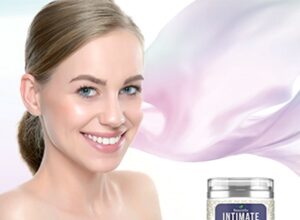There are so many diet plans out there. Which is the best diet plan to follow?
They all seem to promise guaranteed weight loss. Some of them guarantee that you will lose a specific number of pounds in a specific number of days.
Some of them guarantee that you will enjoy your diet and that you will feel satisfied and not feel deprived.
- So which one should you follow?
- Should you just roll the dice and pick one and try it?
- Are they all equally viable options?
- Or are some diets more suitable for some types of people then others?
Let’s take a look at your options and you be the judge.
Low carbohydrate diet
This type of diet is one in which you eat as much quantity as you want of every type of food, except for carbohydrates. You must restrict your carbohydrate intake drastically. Some notable examples of this diet follow:
Atkins Diet
Eat as much of every food you want without regard for fat, cholesterol, proteins, calories, or anything else… ALL you must do is restrict your carbohydrate intake to 20 grams per day for fourteen days. This diet promises rapid weight loss. Most people who follow this diet do in fact lose five to twenty pounds in two weeks. But this type of diet is not truly sustainable for a lifetime, because even though it gradually increases your carbohydrate intake over time, after the fourteenth day, your carbohydrate intake will always be held under constant scrutiny, and more than likely your “lifetime” daily carbohydrate intake will be significantly less than what you are accustomed to.
The Protein Power Diet
Do not eat any carbohydrates throughout the day. However, you are allowed to eat as many carbohydrates as you would like for one hour per day only. As with the Atkins diet, this is not an easy diet to maintain, for psychological as well as physiological reasons.
Low calorie diet
This type of diet is one in which you eat all kinds of foods but you significantly reduce your intake by counting the number of calories you are consuming every day and making sure never to exceed that number. The principle behind this is that if you burn more calories than you consume, you will lose weight. Some notable examples of this are:
Weight Watchers
Every food in the whole world is assigned a “point value” and you can eat any type of food in the whole word, as long as you do not exceed your daily points allotment, which is a number based on your present weight. This diet promises you very slow and steady weight loss, at the rate of one to two pounds per week. The theory behind this slow approach is that you are less likely to give up on the diet if you train your body to eat less and use your points wisely to consume more healthy foods. However, the downside is that once you reach your goal weight, you are committed to counting points even on the “lifetime” diet. You must never exceed your daily maintenance points allotment if you are to never gain any weight back.
Nutrisystem
This program takes all the guesswork (and preparation effort) out of what to eat on a diet. This program requires a paid subscription, in which they will ship you or you must go out and buy only the foods that they prescribe, from their line of brand-name products. There is no room to eat anything on your own. You MUST eat Nutrisystem prepared meals.
Calorie shifting diet
This is a relatively new diet plan that has a unique approach to dieting. You can eat as much food as you want until you are satisfied. However, you must shift your calories. That means that you will be eating carbohydrates, proteins, meats, fruits, and vegetables, group together into four meals per day, and rotate which types of calories you can eat at which times every day over an eleven day period. After the eleventh day, you are allowed to take 3 days off and “cheat”. You can eat whatever you want for three days before you must get back on the regimen for another eleven days. The novelty of this diet is that there is no calorie restriction. The only caveat is that you must eat only until you are satisfied and not until you are stuffed. Also, you can eat as many calories, carbohydrates, and proteins as you want.
You are merely triggering a metabolic response from your body to burn stored fat by only feeding it certain calories at certain times of day that are conducive to maximizing your body’s metabolism.







